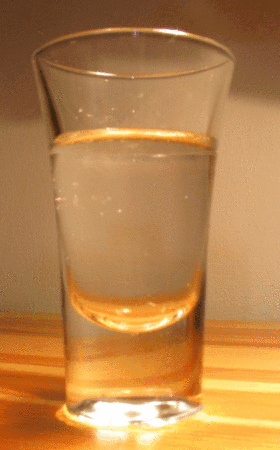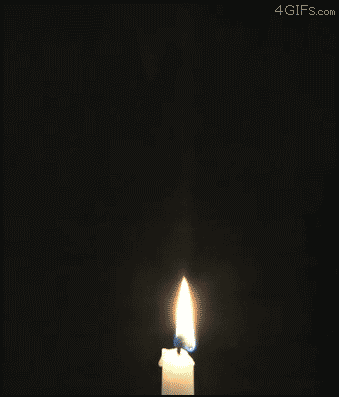Unit Concepts & Resources
Unit Vocabulary
Which one of these animations make the most sense to you?
Water freezing back into a cube does not fit into our idea of reality. This illustrates the idea of entropy. Entropy is a measure of the random activity in a system. A scientific law is devoted to this stating that the general tendency of the universe is to move from order and structure to lack of order, lack of structure. Or, in a system entropy has a tendency to increase.
Your room at home does not clean itself up without the energy someone tidying up your space. In the same way, a 1000 piece jigsaw puzzle does not put itself back together without a considerable amount of time and attention.
In his Ted Talk David Christian tells The history of our world in 18 minutes. He suggests that our world is full of complexity. We don't have to look far to agree with him. In our own bodies exist systems with great complexity with cells full of tiny organelles, fully functioning body systems, and DNA providing codes for it all. What's more, our world has produced civilizations with elaborate communication and transportation systems. David Christian asks: In a universe ruled by laws of increasing entropy, how is it possible to generate the sort of complexity that exists in our world today?
In our next unit, we will look into this idea. We'll journey back into time to improve our idea of the geologic timescale. We'll look at the fossil record that has been used to build our concept of the past. We'll look into how populations have changed over time and the many factors that cause that change. We will hopefully come away with a better idea the life that came before us and how it can inform our ever complexifying world before us.
Monday, November 6, 2017
Friday, September 1, 2017
Unit 1: Genetics and Heredity
Unit Concepts & Resources
Unit Vocabulary
Embed from Getty Images
Have you ever noticed in a litter kittens some will appear different from others? Offspring often have features that look like the mother or the father. Yet, sometimes they can look very different from their parents. In this unit, we will explore why some parents and offspring look different. Use the resources on this post to help guide you through the unit.
Unit Vocabulary
Embed from Getty Images
Have you ever noticed in a litter kittens some will appear different from others? Offspring often have features that look like the mother or the father. Yet, sometimes they can look very different from their parents. In this unit, we will explore why some parents and offspring look different. Use the resources on this post to help guide you through the unit.
Wednesday, August 23, 2017
Grade 8 Science Course Introduction
Parents of 8th Graders---
The content and skills that your child will learn in this course come from the Next Generation Science Standards.
Using these standards students will be challenged to think critically, analyze information, and solve complex problems, in the areas of Life Sciences and Earth Sciences. The following units will make up our year:
Unit 1: Genetics & Heredity
Unit 2: Evolution & Populations
Unit 3: Human Influence on The Environment
Unit 4: Engineering Environmental Solutions
For more information including grading criteria for science 8 visit Course Standards & Info tab on this blog.
Sunday, April 23, 2017
Unit 6: Earth & Space
Unit Goals & Resources
Unit 6 Vocabulary
Pale. Blue. Dot. It's a picture of your home.
Can you see your home below?
[Click forward arrow at the bottom of the image]
Unit 6 Vocabulary
Pale. Blue. Dot. It's a picture of your home.
Can you see your home below?
[Click forward arrow at the bottom of the image]
If the Voyager I Space probe was on Snapchat, it's the shot it would have posted. Voyager I, NASA's camera mounted hunk of metal hurling through space took the photo just before exiting our solar system. The photo was taken from a record distance of about 6 billion kilometers (3.7 billion miles) from Earth. Karl Sagan, a famous astronomer and author asked NASA to control the space probe to turn around and take the photo before leaving our system. Hear his famous reflection of the picture in this video:
This kind of thing gives us perspective. In this unit we will explore not just WHERE we are in space, but also WHEN we are in time and how Earth's forces have changed our planet over time.
This kind of thing gives us perspective. In this unit we will explore not just WHERE we are in space, but also WHEN we are in time and how Earth's forces have changed our planet over time.
Friday, March 17, 2017
Unit 5: Forces of Change
Unit 5 Goals & Resources
Unit 5 Vocabulary
In the first unit this year we asked ourselves the question "what is science?" Hopefully through the course of the year your idea of science has expanded.
Sir Isaac Newton expanded our view of the world tremendously during his lifetime. He was able to do this by taking ideas of earlier scientists (people like Copernicus, Kepler, and Galileo) and make connections with his own observations of the universe.
BBC iWonder - Isaac Newton
Unit 5 Vocabulary
In the first unit this year we asked ourselves the question "what is science?" Hopefully through the course of the year your idea of science has expanded.
Sir Isaac Newton expanded our view of the world tremendously during his lifetime. He was able to do this by taking ideas of earlier scientists (people like Copernicus, Kepler, and Galileo) and make connections with his own observations of the universe.
Newton, most likely did not set out to be the most influential scientist of his time. Yet, his unique ideas have become common laws that we still apply today in everything from space travel to outsmarting the other team by making the best football play possible.
As you explore energy and forces in our last unit, we will not only look for ways to understand these ideas, but also how to use our ideas to impact the world.
Keep an open mind, you never know how your unique experiences and ideas, like Isaac Newton, will impact the world in both small and very big ways.
BBC iWonder - Isaac Newton
Sunday, February 26, 2017
Square Melons & Coming Up with New Ideas
If you've ever had to cut a melon, you will know it is not the easiest food to slice up for a snack.
Innovators have come up with a simple solution. They found a way to grow a square melon.
 |
| Design thinking - creative strategies designers use to consider issues and solve problems while creating new ideas |
Solutions to problems like these seem so simple, yet are so effective. Getting into the mind of people who design new things could be useful to us as students learning about science and engineering.
Professors at Yale University Barry Nalebuff and Ian Ayres believe that taking problems and flipping them 180 degrees to the opposite of reality is one way to come up with radical new ideas that lead to innovation today's world.
Over half of the process of making new things is in the coming-up-with-ideas phase. If we aren't feeling out the needs of the people who will use a product and don't understand the problem we can't think of useful and innovative solutions.
In class we will begin our unit on design by discussing how teams of people work together to come up with new ideas that people want and need. Students will be involved in an activity called the "Bad Idea Factory." In this activity they will be asked to come up with as many bad ideas as they can in a set amount of time. Through this activity we discuss what it means to come up with new ideas and how we can "ideate" more effectively in groups.
Thanks to Mr. Farren for sharing the Nalebuff, Ayers article
Tuesday, February 14, 2017
Chemical Science Design Project
You and your group are in charge of using chemicals to make a self-warming/cooling device for people to use. You can design any type of device, but your design must use the chemicals to heat or cool it in safe way. Your device can be for any situation where it might be useful: everyday use, military, skiing, hiking, fishing, boating, etc.
You and your group must design (and possibly construct) a device that uses a chemical process to warm or cool itself. Then, you must present your design in digital format for others to give feedback.
The overall presentation must include:
- The device:
- model - could be a drawing, poster, video, or digital model.
- your model should include labels and measurements
- A written explanation/advertisement that should include:
- A slogan or name for your device
- Who will use your device?
- How your device works (include chemical reaction)
You will individually reflect on some of the following questions:
- What problem does your device solve?
- How did you choose the chemicals to be used?
- What changes were made to your design when making the solution?
- What problems might still need to be worked out before a device like this might actually be used?
- Which habits of learning did this project challenge the most for you and why?
- How did your ideas and effort lead to the final product?
Project Resources:
Project Rubric - How you will be assessed. Provides feedback on your use of the design processes.
Endothermic & Exothermic Info - Slideshow with some examples of these two types of reaction.
End of Project Reflection - Sample of what you will write at the end of the project.
Endothermic & Exothermic Info - Slideshow with some examples of these two types of reaction.
End of Project Reflection - Sample of what you will write at the end of the project.
*Special Thanks to Mr. Jason Booker for help in designing this project NGSS MS-PS1-6
Monday, January 16, 2017
Unit 4: Reaction Action - Chemical Changes
Unit Information:
BOOM! SIZZLE! POP!
Science is a study of change. Many people might agree that some of the coolest changes are caused by chemicals interacting with each other.
You may not think about it but, chemical reactions are happening all the time all around you---even INSIDE of you. During this unit we will explore chemical reactions, what they are, how they work and how they keep the world going.
Find other chemical reaction gifs like this check out reddit.com
Subscribe to:
Posts (Atom)




.jpg)





